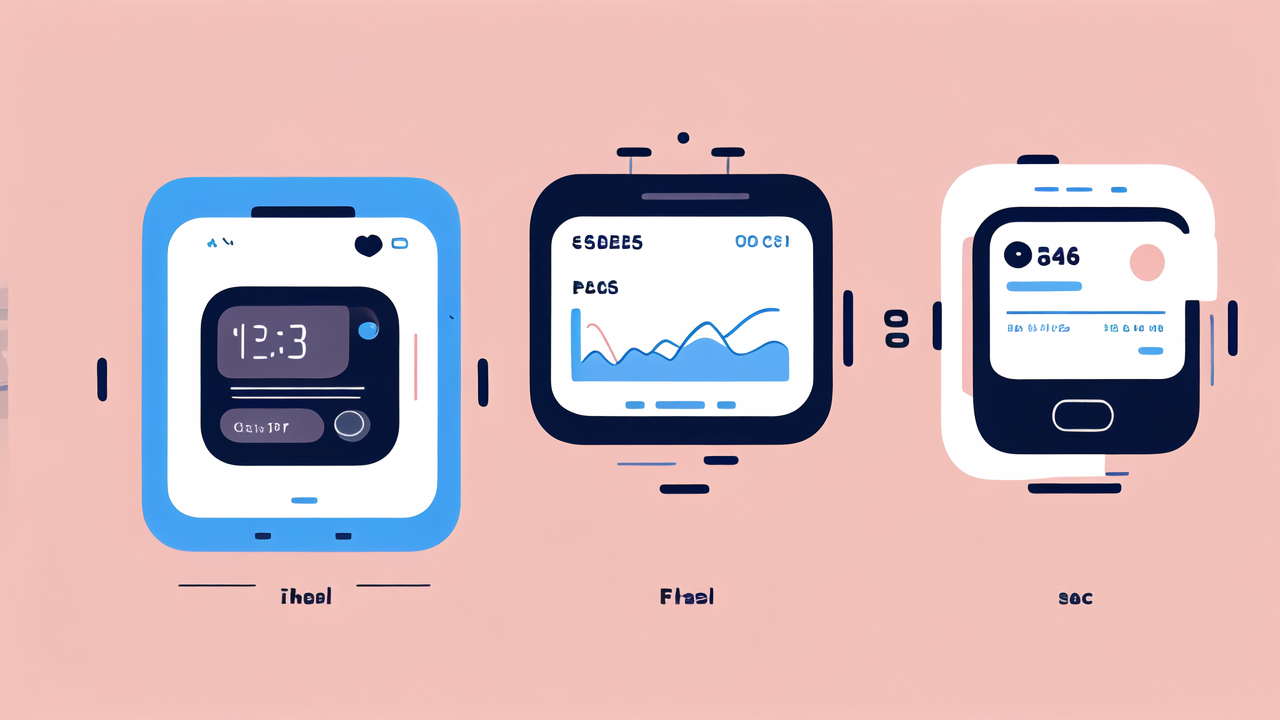The Evolution of Wearable Technology in the United States
A Brief History of Wearable Devices
Wearable tech has come a long way in the US. It started with simple devices like calculators on watches. Then came fitness trackers in the early 2000s. These basic gadgets counted steps and calories burned. As tech improved, so did wearables. They got smarter and more useful. By 2010, we saw the first real smartwatches. These could connect to phones and run apps. Apple joined the game in 2015 with its Apple Watch. This was a big moment for wearables. It showed that big tech companies were taking them seriously. Since then, we've seen rapid growth in features and design.

The Rise of Smart Wearables: From Fitness Gadgets to Fashion Statements
Smart wearables have evolved beyond just tracking fitness. They're now fashion accessories too. Early fitness trackers were basic and not very stylish. But companies soon realized looks matter. They started making devices that were both smart and fashionable. Smartwatches now come in various styles and materials. You can find ones that look like classic watches. Some even have customizable faces to match your outfit. Fitness bands have also gotten sleeker. They're no longer just for the gym. People wear them all day, every day. This shift has helped wearables become mainstream. They're not just for tech enthusiasts anymore.
The Impact of 5G and IoT on Wearable Technology
5G and IoT are changing wearable tech in big ways. 5G means faster, more reliable connections. This allows for real-time data transfer from wearables. It opens up new possibilities for health monitoring and communication. IoT, or Internet of Things, connects devices to each other. This creates a network of smart devices working together. For wearables, this means better integration with other tech. Your smartwatch can now control your smart home devices. It can also share data with your phone or computer seamlessly. These advances are making wearables more useful and connected than ever before.
Key Players and Market Trends in the Wearable Technology Industry
Leading Smart Watch Brands and Their Unique Selling Propositions
Several brands dominate the smartwatch market. Each has its own unique features:

- Apple: Known for seamless integration with iPhones and health features.
- Samsung: Offers versatile designs and compatibility with Android phones.
- Fitbit: Focuses on fitness tracking and long battery life.
- Garmin: Popular among athletes for its advanced sports tracking.
- Fossil: Combines traditional watch design with smart features.
These brands compete on features, design, and ecosystem. Apple leads in overall sales. But others have strong niches. Samsung is popular among Android users. Fitbit appeals to fitness enthusiasts. Garmin is the go-to for serious athletes. Fossil attracts those who want a classic look with smart features.
Understanding the Consumer Market: Adoption Rates and Preferences
Smartwatch adoption has grown steadily in recent years. More people are seeing the value in these devices. Health and fitness tracking are big drivers. Many use smartwatches to monitor their activity and heart rate. Convenience is another factor. People like having notifications on their wrist. There's also a growing interest in contactless payments via smartwatches. Different age groups have different preferences. Younger users often want the latest tech features. Older users may prefer simpler interfaces and health monitoring. Price is still a factor for many. But as prices come down, adoption is likely to increase.
Regulatory Challenges and the Future of Wearable Technology
As wearables collect more data, privacy concerns grow. Regulators are looking at how companies use and protect this data. There are also questions about the accuracy of health measurements. Some features, like ECG, need FDA approval. This can slow down innovation. But it also ensures safety and reliability. Looking ahead, we can expect more focus on data protection. There may be new rules about how companies can use health data. We might also see more standards for accuracy in health tracking. Despite these challenges, the future looks bright for wearables. They're becoming more integrated into healthcare and daily life.
Technological Advancements and User Applications
Breakthrough Innovations in Smart Watch Features and Design
Recent years have seen exciting advances in smartwatch tech. Screens are getting better and more energy-efficient. Many now use OLED displays for vivid colors and deep blacks. Battery life is improving too. Some watches can now last a week or more on a single charge. New sensors are expanding health tracking capabilities. Some watches can now measure blood oxygen levels and detect falls. Voice assistants are getting smarter, making hands-free use easier. Design-wise, we're seeing more options. From rugged outdoor watches to sleek luxury models, there's something for everyone. Customizable watch faces let users personalize their experience.

How Wearable Technology is Shaping Health and Wellness Practices
Wearables are changing how we approach health and wellness. They provide constant health data, empowering users to make informed decisions. Many people use smartwatches to track their daily activity and sleep patterns. This awareness often leads to healthier habits. Some watches can detect irregular heart rhythms, potentially saving lives. Stress monitoring is another growing feature. Watches can suggest breathing exercises when stress levels are high. In fitness, smartwatches act as personal trainers. They can guide workouts and track progress over time. Some healthcare providers are even using patient data from wearables. This helps them monitor chronic conditions and adjust treatments.
Integration of AI and Machine Learning in Wearable Devices
AI and machine learning are making wearables smarter. These technologies help devices understand user patterns and preferences. For example, a smartwatch might learn when you usually exercise. It can then send reminders or suggestions at the right time. AI can also help interpret health data more accurately. It can spot trends that might indicate health issues. Machine learning improves voice recognition, making voice commands more reliable. It also helps with predictive text, making messaging easier on small screens. As these technologies advance, wearables will become even more personalized and useful. They'll be able to offer more tailored advice and insights based on individual user data.




Leave a comment
This site is protected by hCaptcha and the hCaptcha Privacy Policy and Terms of Service apply.